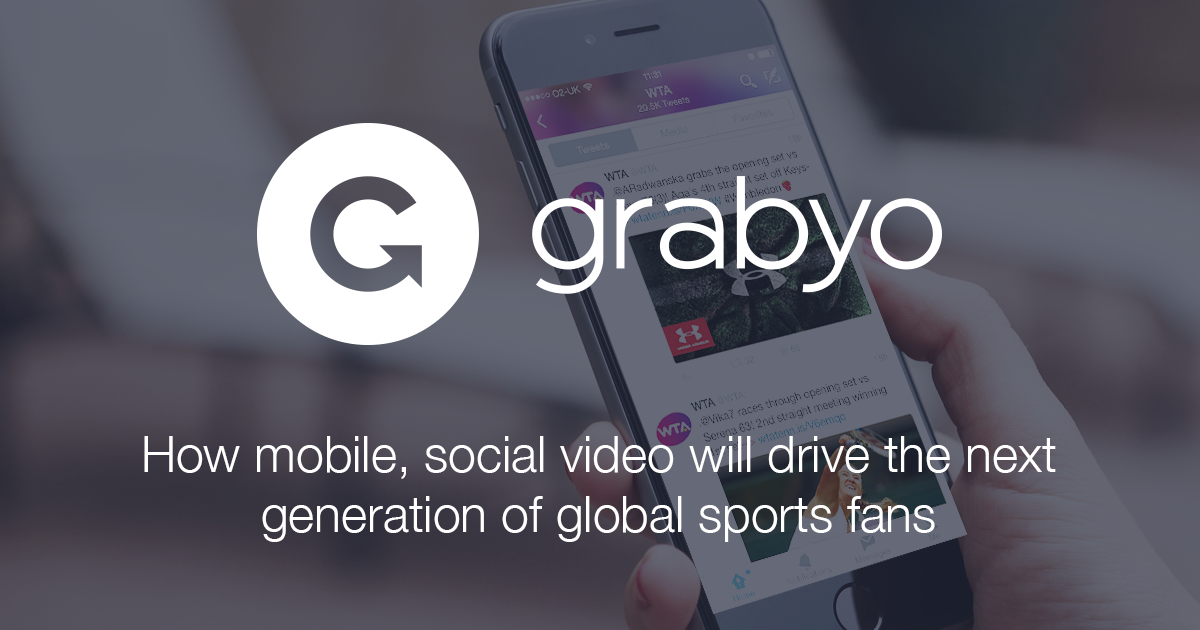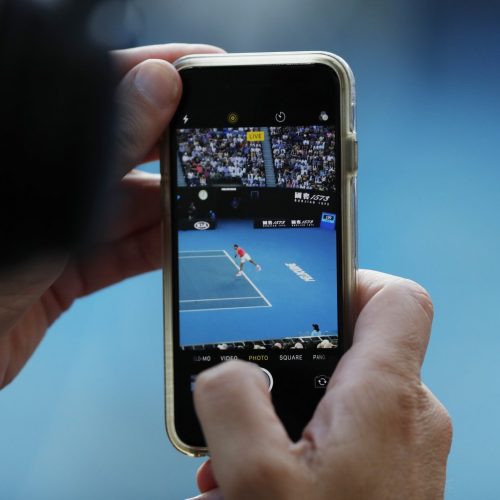Talking Grabyo’s journey with CEO Gareth Capon
It’s no secret that social video is exploding. With the rapid rise of video-focused social media including the likes of Snapchat and Vine, some of the more established social media platforms are having to sit up, take notice and improve their own video capabilities.
Enter Grabyo, real-time video specialists that are currently taking the world by storm, filling the hole between broadcasters, platforms and rights holders and mobile consumers. Working with the likes of La Liga, Setanta Sports, Channel 5, Snapchat and Wimbledon, their vast list of credentials continues to grow as platforms hurry to try and satisfy growing consumer demands.
But how has Grabyo been led to the very epicentre of this video revolution? Who better to ask than their CEO, Gareth Capon.
You joined Grabyo a little into it’s voyage in 2014, what was it that you brought to the fray?
Prior to joining Grabyo, I was Product Development Director for BSkyB and when I joined Grabyo as CEO, what I thought I could add was both my understanding of what was happening in the broadcast and rights market in sport but also deal with the increasing need to engage consumers on multiple platforms. One of the clear trends from a broadcast perspective when I was at Sky was that consumers want access to video content on a multitude of platforms.
The idea that broadcasters can deliver a content service via a linear TV proposition and meet the needs of all your customers and all your potential customers in the future is just not possible anymore. If you’re a content owner and you have a single channel single device with a linear TV proposition and that’s the only way you distribute your content, you’re going to miss an enormous amount of opportunities to engage with customers. You’re also going to frustrate your new audience because their demands of the way they want to watch and share content has changed.
People want content on their phone, their laptop, their tablet – they want to be able to share content with others, they want the flexibility to be able to watch content on demand and that’s a big change in consumer behaviour. My understanding of where that market was and where it was going as well as my relationship with broadcasters and rights holders allows me to bring some value to the company.
Is Grabyo filling a hole in the market, or creating one?
We’re simply providing a set of tools and capabilities to enable rights holders to meet the demand of consumers which is constantly changing. If you look at the Premier League, the Champions League, NFL and the NBA, TV rights deals right are getting bigger and better in a world where an increasing amount of content is provided and shared across a number of platforms.
But how does that fit in with TV broadcasting rights and broadcasting rights of leagues?
The idea that the growth of short form video is damaging TV rights just hasn’t played out. We work with whoever owns those rights whether it’s the federation’s rights, an event or even the individual.
The way we look at it is not necessarily about what this means for business models because they’ll continue to evolve the way consumer behaviour changes. And this all comes back to the consumers. In the end, the service of all rights holders, whether it’s a broadcaster or federation, depends on the needs of their customers.
In the last 6 months, Grabyo’s had quite a lot of partnerships, how are they doing?
We’ve been building out our scope and capability of our platform for a couple of years and we firmly believe we have the best and most flexible platform in the market now. In terms of some of the deals, like the one with La Liga, we’ve been working with them for some time, building campaigns and opportunities and ultimately a relationship with a really significant sports federation – one who has significant ambitions to build their brand and their audience on a global basis.
It matches our beliefs of whats happening with regards to the world of sports and rights and videos over time. We’re still in the early stages of our journey and are growing really rapidly. From a volume perspective the one thing I can say last year we delivered more than 750 million video views on our platform – video distributed by Grabyo appeared more than 5 billion times on mobile phones around the world.
In January, we’re now on course to do a billion impressions in a month for the first time in our history so what we can see is that the demand is there, the consumption is up. We built our business to support the needs of content owners in this quite rapidly changing environment.
You mentioned your partnership with La Liga, is that the strategy of Grabyo moving forward, going after rights holders like Wimbledon, La Liga etc?
Absolutely, we definitely see rights holders as a key customer for us. I think broadcasters are absolutely equally as important. We have a number of new broadcast partners as well as focusing on a few this year, especially after building out specific capabilities of our mobile product in the last 2 months.
[We’re focusing on sectors like] the news industry, the publishing industry, news broadcasters and news publishers, industries that are a bit more traditional.
However, we’re not only focused on large sports rights holders, we do music, we do events, we’re doing fashion this month, we’re working with some individuals and some celebrities as well. We’re definitely not just a sports or federation focused business.
Tell us about Grabyo working with Snapchat
Snapchat is a very rapidly growing and interesting platform for rights holders. We’ve built some tools that can be used by customers who are on the discover platform – sharing vertical video etc. I think what snapchat is doing in terms of video is very smart. The live stories feature is a fascinating and an interesting product in both the ability to curate content from 1000s of users and build a very different experience but also present that in a curated way to hundreds of millions Snapchat users.
I expect to see many more partnerships between rights holders and Snapchat in the future and we welcome the opportunity to work with Snapchat during this year and beyond.
Where are we on the social video timeline?
You only have to read Facebook’s numbers to see that we’re definitely not at the peak of social video and, in any case, we think of it more broadly than that. It’s about human interaction and behaviour which is absolutely being driven by mobile.
There will be another 2-3 billion smartphones on the planet in the next 5 years, that means there’s another 2-3 billion more people who are going to be picking up smartphones and using it to communicate with each other and ultimately consume video.
We’re a long way from the end of this process. We’re going through a multi-generational change in that the primary device for all forms of consumption such as payments and communication will be the smartphone.
As developing economies emerge and move from 2g to 3g and 4g networks, this trend is only going to accelerate. One of our most successful clients partners are operating in Asia at the moment and they’re seeing phenomenal growth in terms of video consumption and distribution on our platform right now which is a testament to the potential of this market and just how early we are in the journey.
About author
You might also like
The seven essentials for achieving successful sports branding
By Daniela McVicker When it comes to sports, great branding is a must. Your brand influences how people see your company or team. It helps you to forge connections with
Live Chat: A New Social Experience in Sports
Article written by John S. Kim, CEO and co-founder of global API company SendBird Social media rose to prominence throughout the world due to its potential for connection. Social channels provided the
Snack Media’s Football Content Campaign’s Review: February
By Mike Constanti This series, in partnership with Snack Media, will look at the best football campaigns from advertising to social media on a monthly basis, as Digital Sport evaluates how









